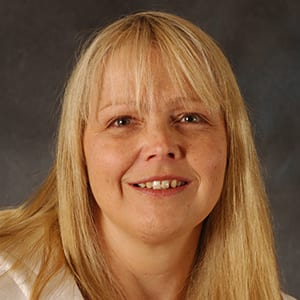SNOHOMISH, Wash. — NHRA founder Wally Parks — journalist, pioneer of an organization with global reach and, above all, car lover — constantly put pen to paper.
And Richard Parks, the elder of his two sons, has been generous to share the rich compilation of his father’s articles and notes — some of which might seem surprisingly relevant today, 15 years after Parks’ death at age 94.
Parks, in the late 1990s, wrote about the need to improve what he called “substandard facilities” and to shorten the length of the course and the event in general.
In a 1996 note he titled “Crystal Ball,” Parks voiced his thoughts “regarding the prospective future of NHRA and the drag racing sports-entertainment industry. As we all know, the costs of racing are growing higher with each passing season, as they always will, and we have been experiencing a gradual decline in entries at certain events in some of our top-ranking professional categories and in a few of the more sophisticated classes of sportsman racing. While our present schedule of major national events is having a successful year, it includes a few sub-standard facilities.”
Those, he said, need “to be a premium theater for drag racing, designed to present the best possible showplace for the caliber of events that have made NHRA successful.”
Then, shockingly, he decided, “We need to look beyond the routine of quarter-mile racing as the best that we can offer. And we need to consider a shorter distance — the eighth-mile,” which he said “is ideally suited for grandstand and suite-spectator benefits, as it condenses on-track action to more easily followed start-to-finish racing plus a more visible range of the shutoff area. It also offers valuable benefits for television’s coverage, from staging to sand-trap area.
“Performance in the eighth-mile,” he argued, can increase the excitement quotient. “The number of runs per hour is multiplied by the shorter distance, while the closeness of race finishes is vastly improved. Far less parts breakage, due to less stress on components, ensures fewer time-consuming oil-downs and is a critical factor in lowering contestants’ costs of racing. Safety, too, is benefited in the shorter competition course and its more adequate track shutoff area.”
He knew that idea might not be popular: “To seriously consider any major adoption of eighth-mile racing requires a dedication to the promotion and development of this concept to ensure its proper introduction and potentials for popularity. As a mild departure from common tradition, it will take concentrated ‘selling’ to cultivate its general appeal.” He said it might lead to “the ‘secondary series’ we have long needed.”
Parks wrote of a “flagship” operation for that series, “with an Eighth-Mile Nationals as its premier attraction … and two major leagues, in effect, one building an eighth-mile following and the other focused on the well-established quarter mile” for “an annual calendar of activity accommodating 30 to 40 events — maybe 15 per series.”
He envisioned that “the eighth-mile program might serve to attract sidelined racers from NHRA divisions who no longer can afford or be competitive at the NHRA major meets. In a program with options, the professional racers might be challengers for eighth-mile event points and awards either separate from or in addition to official points issued in quarter-mile events competition.”
In general, he wrote, “Properly detailed, introduced, and promoted as ‘tomorrow’s answer to drag racing’s development,’ eighth-mile competition can become a true winner — but only with confidence and a conviction to making it work. Plus, features far outweigh minuses in eighth-mile evaluation, and it’s worth our consideration.”
Like some today, he noticed well before 2000 that “one of the major dilemmas NHRA faces today is with the number of classes that are included in its racing schedules. While the number is healthy in growing fields of competitors, it is cumbersome in conducting some … events and has curtailed NHRA’s ability to produce top quality, major-league shows at its events, for fans as well as TV programming.”
Parks said, “National-event operations occupy far more hours of running than is reasonable for first-class programs.”
Many would say, “Amen” to that. Surely sponsors would agree with Parks that fans need time to visit the Manufacturers Midway. Parks called for “a more reasonable time schedule of fewer hours.”
Parks was blunt: “In short, the entire competition system needs an overhaul. The national events’ racing agenda needs to be tightened for fewer hours and presentations and more professional ‘show-business’ attraction. Building the prominence and importance of our divisional events is a long-overdue priority, for countless reasons.
“The right kind of program could ultimately become the ‘secondary series’ we’ve been looking for, with potentials for unrealized growth. Our track operators have had little incentive to promote and advertise their points meets — with negligible help from us. A new focus and heavy concentration on developing a more exciting concept could benefit everyone involved.”
This fascinating insight only proves that the more things change, the more they stay the same.
But maybe the NHRA should consider Parks’ ideas for desperately needed growth.
